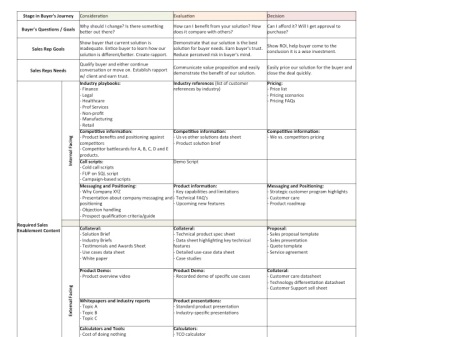I was recently reviewing some content that a product marketing manager had created and we were discussing it in light of an upcoming product launch. The discussion that ensued reminded me that for junior product marketing managers it sometimes can be too easy to fall into the product features trap and lose sight of what a product marketer brings to the table as it relates to messaging and positioning.
What I told that product marketer at the time, and something I still believe in, is that anyone can write. Creating a piece of product collateral is easy. Just take whatever the product team gives you, do some formatting, work on the grammar and style and you’re done. Look at most product data sheets, solution briefs and the like from the multitude of software vendors out there and you know what I’m talking about. A ton of feeds and speeds, how we are “leaders” in the market and why our “world class solution” is faster/better/nicer than everyone’s else.
Here’s where the product marketing comes in, to take all of the tech talk, all of the features, and translate them. Good marketers can translate features into benefits, but truly great marketers and excellent product marketers don’t stop at benefits, they go all the way to understand the value to the customer.
But wait, you say, aren’t both the same? Not so fast.
While a feature related to, let’s say, faster data synchronization might be translated into a benefit for the customer like “more accurate data”, the true value looks at what it means for the business and makes that connection obvious, like “up to the minute customer information when your support team most need it”.
Sounds easy, but in reality is anything but. It requires time, experience, and critical thinking. And the best way to get better at doing it is by getting brutally honest feedback that can point you in the right direction.
Here are a few guiding questions you can ask yourself as you are writing or reviewing copy related to product announcement, press release, data sheet or other piece of content:
– Can someone that has no knowledge of our company or product simply read this and understand why it is important or how it solves a key problem?
– Is it making a clear connection between a problem and a solution?
– Would someone having the problem or pain you are solving be truly interested after reading it?
– Are you using too many acronyms or industry-specific terms that only few people understand?
– Can you say it in a more direct, simpler way? Can you cut out adjectives and still make it sound interesting?
– Ask yourself “so what”.
Creating content with the value in mind is not easy and requires a lot of effort and discipline. Get others to review and criticize what you wrote, see how others are doing it, and put yourself in the end user or buyer’s shoes. With time you’ll get to do it without noticing it.



 Posted by Daniel Kuperman
Posted by Daniel Kuperman 


 Winner: New York Stock Exchange, for
Winner: New York Stock Exchange, for 











